Last Chance to Catch NYC's Holiday Notalgia Train
We met the voices of the NYC subway on our nostalgia ride this weekend!

A look at NYC sites associated with presidents from the first to the current!

From its days as the last capital of the United States under the Articles of Confederation and the first capitol under the Constitution, New York City has long been intertwined with the United States Presidency. Presented below are a collection of the City’s presidential haunts, which have seen the birth, life, and death of many of our commanders in chief.

Between September 14 and October 20, 1776, the Morris Jumel Mansion served as George Washington’s headquarters. The mansion was constructed in 1765 by Roger Morris, a British loyalist who returned to England during the War, and in 1810 was bought by Stephen and Eliza Jumel (Eliza would go on to marry Aaron Burr who briefly lived at the house). The house is currently open to the public and is run by the Historic House Trust of New York City.
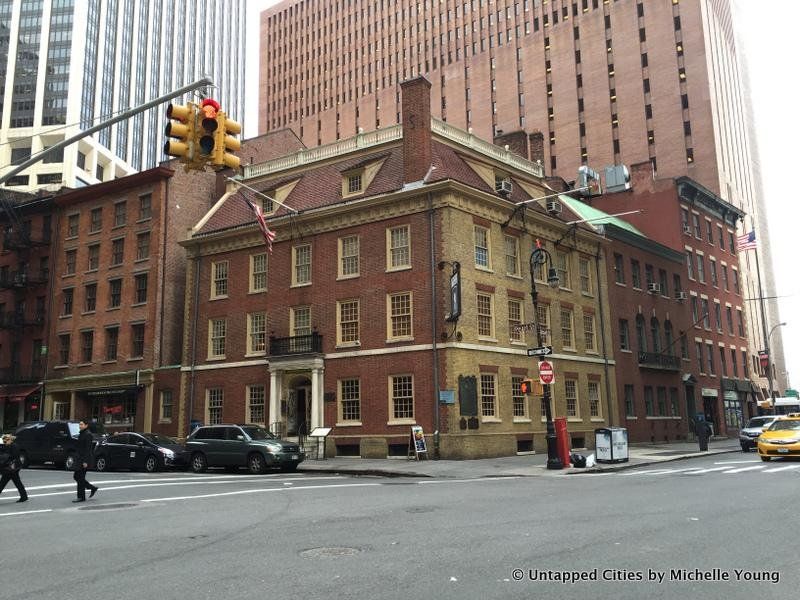
On December 4, 1783, Washington delivered his farewell address to the troops at Fraunces Tavern. A restored or recreated (depending on whom you believe) version of the Tavern, which is now a museum, possesses a lock of George Washington’s hair and one of his teeth.

On April 30, 1789, Washington stood on the balcony of (the first) Federal Hall to be sworn into office as the first president of the United States of America. While that building was demolished almost two centuries ago, the stone on which Washington stood, a piece of the balcony, and his inaugural bible can be seen at the current Federal Hall (located on the same site as the prior one), his desk is in the New York City Hall, and another piece of the balcony can be found in the lobby exhibit of The New York Historical Society.
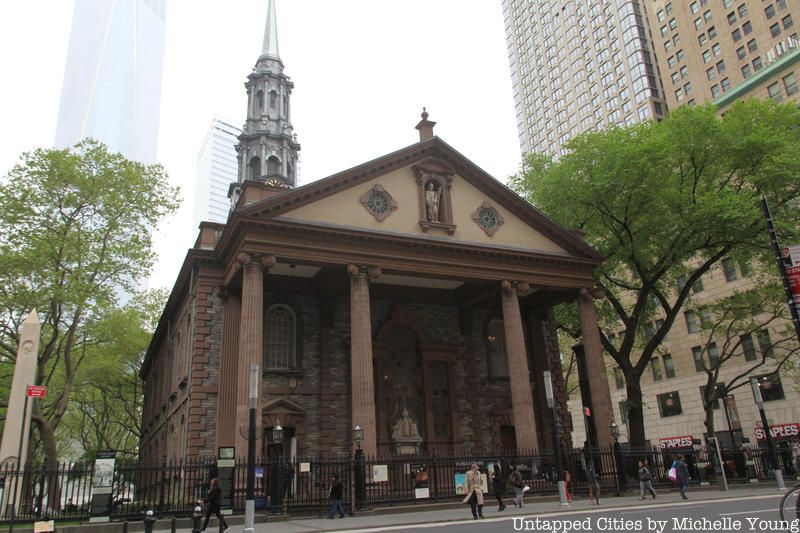
On his inaugural day, Washington, along with members of Congress, worshipped at St. Paul’s Chapel. Washington had previously worshiped there in 1776 prior to retreating from the City and continued to do so during his tenure as president in New York. Washington’s marked off and commemorated with an eighteenth-century oil painting of the Great Seal of the United States.

From April 23, 1789, to February 23, 1790, George Washington lived in the Samuel Osgood House, located at 1 Cherry Street, making it our nation’s first presidential mansion. While the house was demolished in 1856, a plaque currently located on the Brooklyn Bridge memorializes the country’s first “White House.”

The Alexander Macomb House became the country’s second presidential mansion, from February 23 to August 30, 1790. A plaque currently marks the House’s location at 39 Broadway.

On September 11, 1776, John Adams, Benjamin Franklin, and Edward Rutledge met with Lord Howe, the Commander in Chief of the British forces in America, in an attempt to end the Revolutionary War. While their conference was unsuccessful, it lent its name to the house in which it was held. Conference House, which is located on the southern tip of Staten Island, is open to the public and run by the Historic House Trust of New York City.

As the first Vice-President of the United States, Adams lived in a mansion located on Richmond Hill. The house had been previously used by Washington as his headquarters and Aaron Burr later lived there. In 1817, the land was subdivided by John Jacob Astor and sold for residential development. It was located near Lispenard’s Meadows at the corner of what was then Varick and Van Dam streets.

As the first Secretary of State, Jefferson resided, for the majority of his time, in the nation’s capital at 57 Maiden Lane. Jefferson leased his residence from two grocers, Robert and Peter Bruce, for 106 pounds a year. In 1929 a plaque was installed on the site of his former house (to learn more about Jefferson’s other stops in New York, check out Monticello’s website).

In 1830, Monroe moved to New York to live with his son-in-law, Samuel Gouverneur, after the death of his wife. When Monroe died in 1831, a funeral service was held for him at St. Paul’s Chapel and he was buried in the New York City Marble Cemetery, in a vault owned by Gouverneur.
In 1858, Virginia requested that Monroe’s body be repatriated. With the agreement of the Gouverneur family, Monroe’s body was disinterred on July 2, 1858, and moved to the Church of the Annunciation on 14th Street, before being moved by ship to Virginia. Monroe was re-buried in Richmond’s Hollywood Cemetery.
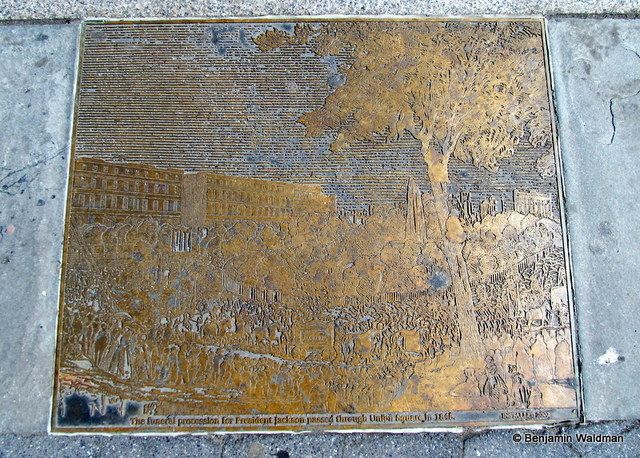
In 1846, Jackson’s funeral procession passed through Union Square Park. This event has been memorialized in one of the plaques that circumvent the Park.
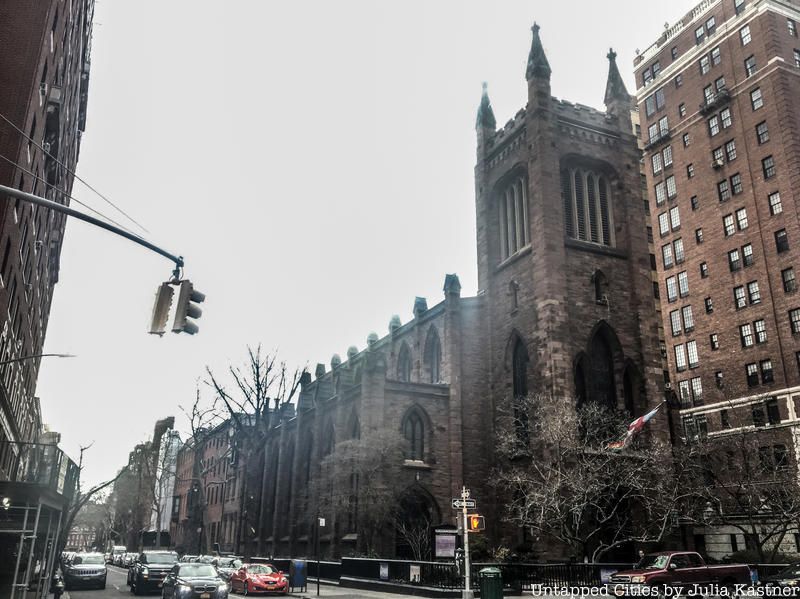
On June 26, 1844, Tyler became the first president to wed while in office. He married his second wife Julia Gardiner on Fifth Avenue, in the Church of the Ascension.
Polk became the first sitting president to have photographs taken by Mathew Brady in his New York City Studio.
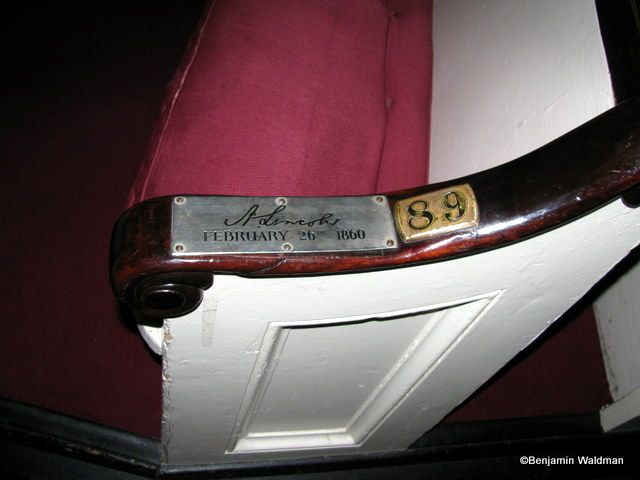
In February 1860, Lincoln, who had not yet announced his presidential candidacy, was invited to speak at Plymouth Church, in Brooklyn Heights. At the last moment, the Young Men’s Republican Union moved the speech to the Great Hall of Cooper Union, possibly due to a fear that not enough people would come out to Brooklyn to hear Lincoln speak. Many view the speech as the moment at which Lincoln secured the Republican nomination. Despite the change in venue, Lincoln still visited the church the day before his speech, and the pew in which he sat is marked by a silver plaque. Returning to the city three weeks later, Lincoln again worshiped at the church, making it (according to the church) the only one in the city which Lincoln attended.
Before giving his rousing speech, Lincoln stopped by Brady’s New York City studio where he was photographed by Brady for the first time
Lincoln again passed through New York City in 1861, on his way to Washington DC from Springfield, via train. Lincoln’s final trip through the city was the reverse trip of his pre-inaugural 1861 trip. On April 24, 1865, Lincoln’s funeral procession arrived in New York City. He lay in state in City Hall overnight where over 120,000 people came to view Lincoln’s open casket. One of the people who came to see Lincoln’s body was Jeremiah Gurney, Jr, a New York daguerreotype photographer. Gurney managed to take a photograph of Lincoln laying in state, unfortunately, it was almost immediately confiscated by Edwin Stanton. The photograph had been thought lost to history until 1952 when a copy was discovered at the Illinois State Historical Library.
On the 25th, the casket proceeded up Broadway to 14th Street where a young Teddy Roosevelt watched from his window, across Fifth Avenue, and then up to 34th Street where the Hudson River Railroad transported him to his next destination.
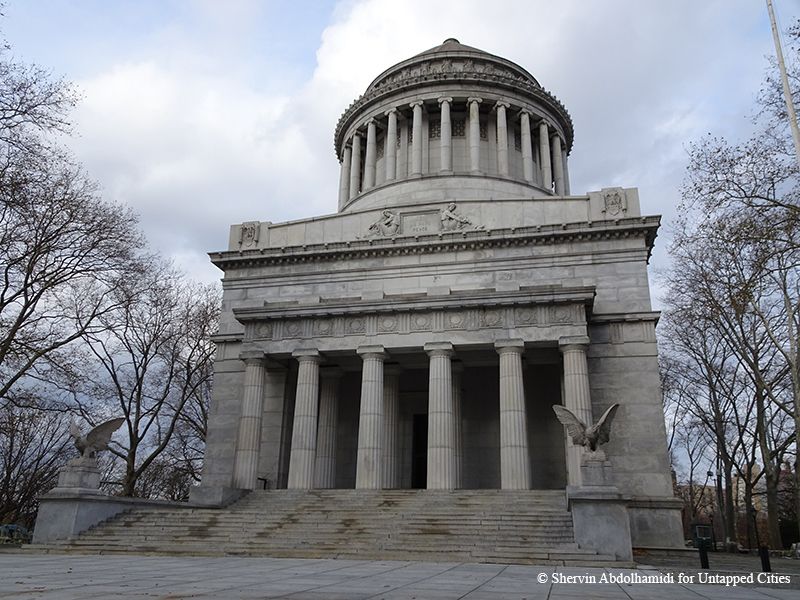
After his presidency, Grant and his wife lived part of their time in New York City and he listed the city as one of the places in which he wanted to be buried, eventually next to his wife. After a 60,000-person, 5-hour, 7-mile funeral procession, Grant was laid to rest in a vault in Riverside Park. (A plaque currently marks this former entombment site)
On April 27, 1892, what would have been Grant’s seventieth birthday, President Benjamin Harrison laid the cornerstone for the permanent tomb. The tomb, the exterior of which was modeled after the Mausoleum at Halicarnassus and the interior of which was modeled after Les Invalides, was dedicated five years later to the day. Grant’s Tomb, which was unfinished according to its original plan, is currently run by the National Park Service.
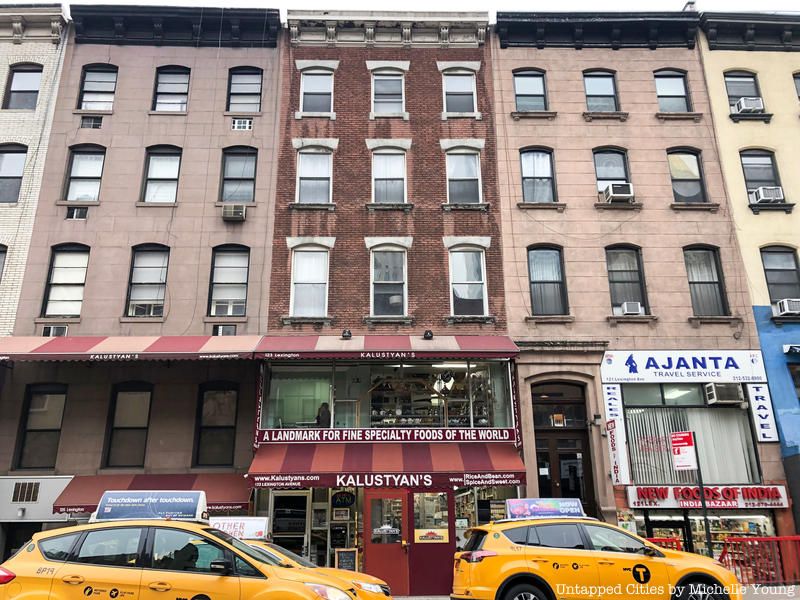
In the early hours of September 20, 1881, John R. Brady, a New York Supreme Court justice, swore Arthur in as the twenty-first president of the United States, making him the second president to be sworn in in New York City. (Arthur was sworn in again two days later in Washington D.C.) The inauguration occurred in Arthur’s house, located at 123 Lexington Avenue. Unlike almost all other similar sites, it is still a private residence and has not been taken over by any historical agency or association. Today, visitors can see a plaque on the building where Arthur was sworn in and later died, on November 18, 1886.
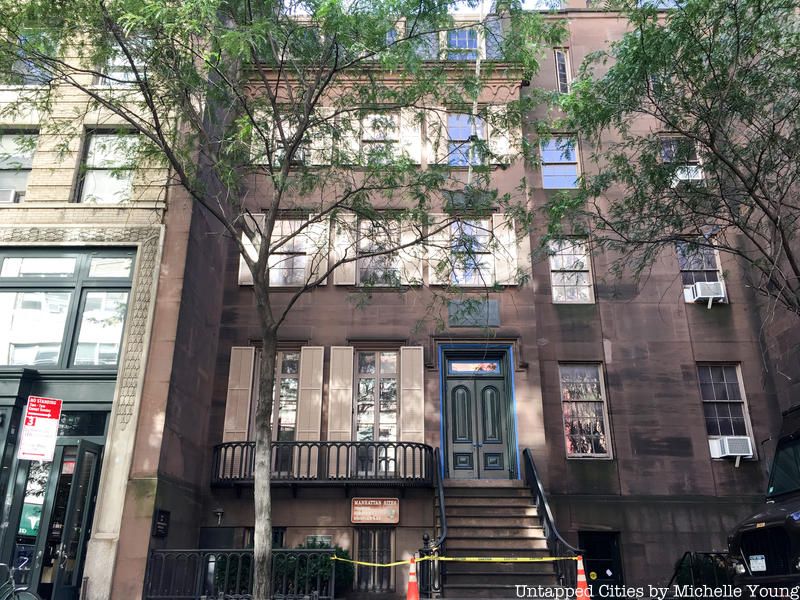
Roosevelt was born on October 27, 1858, in his family’s 28 East 20th Street brownstone. He lived there until the age of fourteen when his family moved to 6 West 57th Street. In 1916, the house was demolished to make way for a retail building. Within weeks of his death, in 1919, the Women’s Roosevelt Memorial Association purchased the lot on which the home had been located, and the adjoining one, to recreate his childhood home. The Theodore Roosevelt Birthplace National Historic Site is open to the public and is operated by the National Park Service.

In 1944, after his wife’s sudden death, Hoover made Suite 31A at the Waldorf Astoria, his sole residence. He and his wife had previously split their time between Palo Alto and the hotel. In 1964, Hoover died in the Waldorf Astoria. A recreation of his suite can be viewed at his presidential library.
The Waldorf Astoria also possesses the presidential Track 61. Beneath the building is an abandoned subway track and car which was utilized by the likes of General Pershing and Franklin Roosevelt to enter the whole through a private entrance.

When Roosevelt got married, he and Eleanor moved into a brownstone at 125 East 36th Street. Roosevelt had previously been living at 200 Madison Avenue, with his widowed mother, Sara Delano Roosevelt. He couldn’t escape his mother and in 1907, two years after they got married, the three of them moved into a townhouse at 47-49 East 65th Street. The building currently houses the Roosevelt House Public Policy Institute.

From May 1948 until January 1953, Eisenhower served as the thirteenth President of Columbia University. Due to his military service, Eisenhower was often away from the University, most notably when in December 1950 he became the first supreme commander of NATO. While at Columbia, Eisenhower lived in 1912, McKim, Mead & White designed President’s House.
On May 19, 1962, Kennedy celebrated his forty-fifth birthday at (the third) Madison Square Garden. Marilyn Monroe famously performed a sultry rendition of Happy Birthday, Mr. President wearing a now-famous dress into which she had to be sewn.
Discover more Kennedy haunts here!
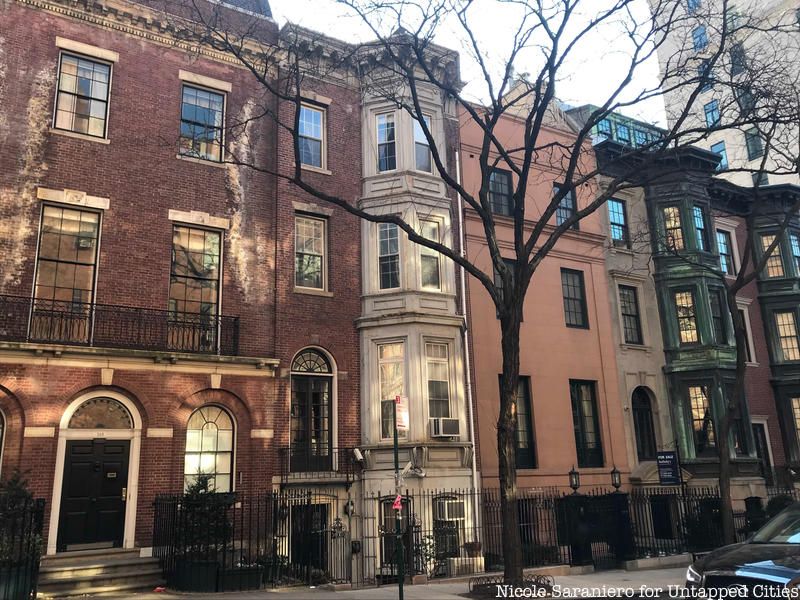
In 1963, Nixon purchased the fifth-floor apartment at 810 Fifth Avenue. Nelson Rockefeller and his wife also lived in the building. During their presidential campaign, the two took different elevators in the building in an attempt to avoid one another. After his presidency, Nixon returned to the city. Even a former president had a hard time finding a new abode. Eventually, Nixon and his wife settled on a 5,000-square-foot, 12-room townhouse at 142 East 65th Street. The Nixons lived there for fewer than three years before moving out to Saddle River, New Jersey. On April 22, 1994, Nixon died in New York City at New York Hospital-Cornell Medical Center.
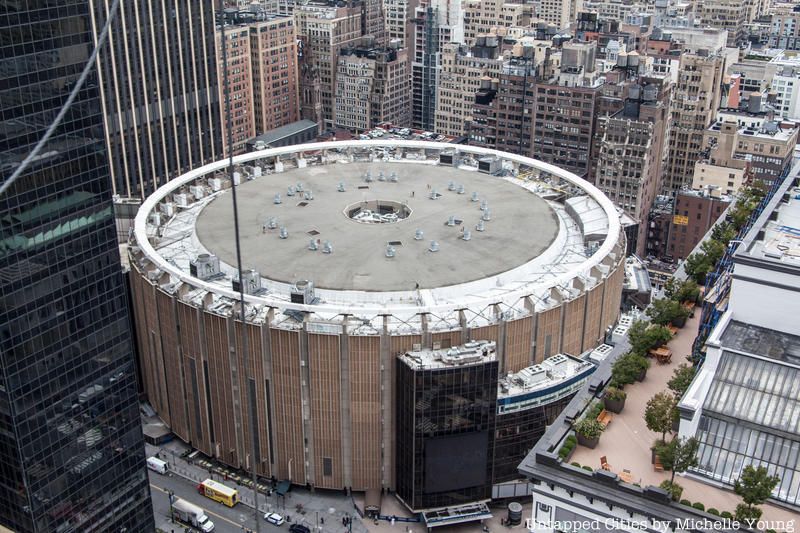
From July 12 to July 15, the 1976 Democratic National Convention met at Madison Square Garden and nominated the former governor of Georgia, Jimmy Carter, and Minnesota Senator Walter Mondale as his Vice President-elect.

Madison Square Garden was also the site of the 1992 Democratic National Convention Arkansas Governor Bill Clinton and Tennessee Senator Al Gore were nominated. The keynote speaker was former Texas Representative Barbara Jordan, who had given the keynote at the party’s prior (1976) New York City convention as well.
In 2001, Clinton began his post-presidential life in New York City. The William J. Clinton Foundation, along with the former president himself, moved into offices at 55 W. 125th Street. In 2011, the Foundation moved down to Water Street. However, Clinton retained his top-floor office in Harlem.
From July 31 to August 3, the 2000 Republican National Convention met at Madison Square Garden and nominated Texas Governor George W. Bush and former Secretary of Defense Dick Cheney, who went on to win the election.
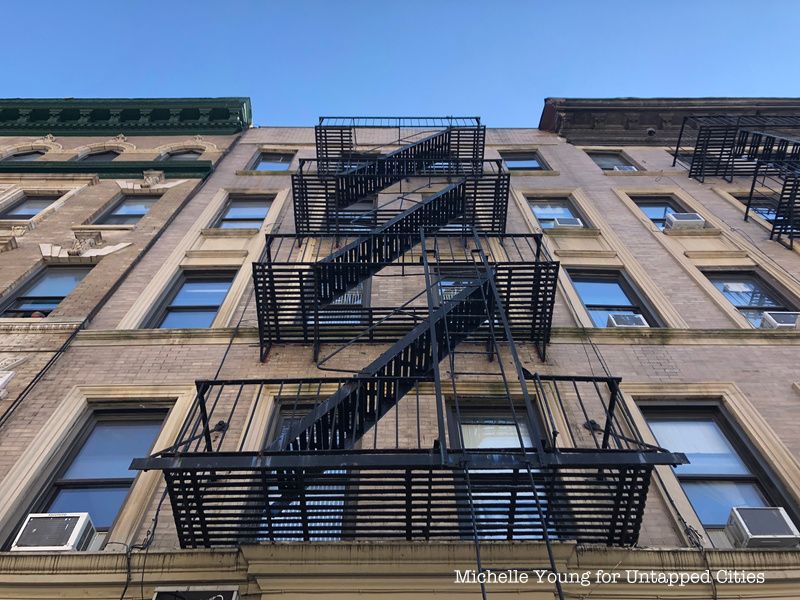
In August 1981, Obama arrived in New York City, fresh from his time at Occidental College. According to his book, Obama spent his first night in the city in an alley near 109th Street and Amsterdam Avenue and bathed in a hydrant alongside a homeless man, the following morning. While at Columbia, Obama lived in apartment 3E, at 142 West 109th Street, with a monthly rent of $360. Obama also lived in a townhouse in Park Slope, Brooklyn in the mid-1980s with a girlfriend:
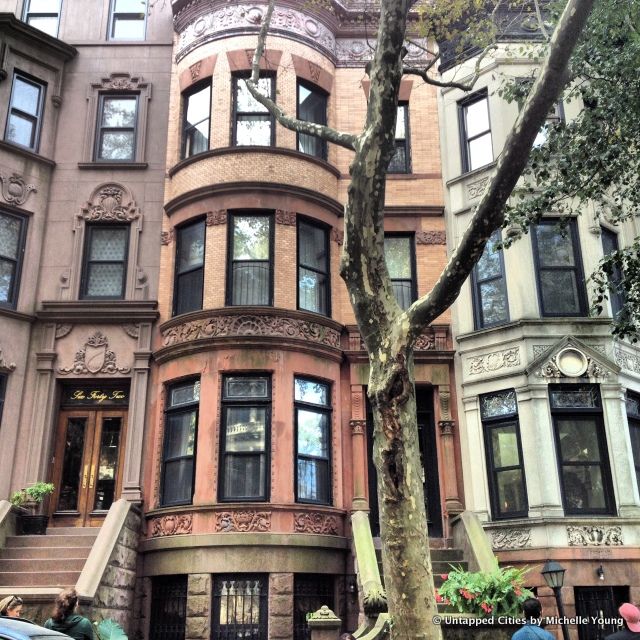
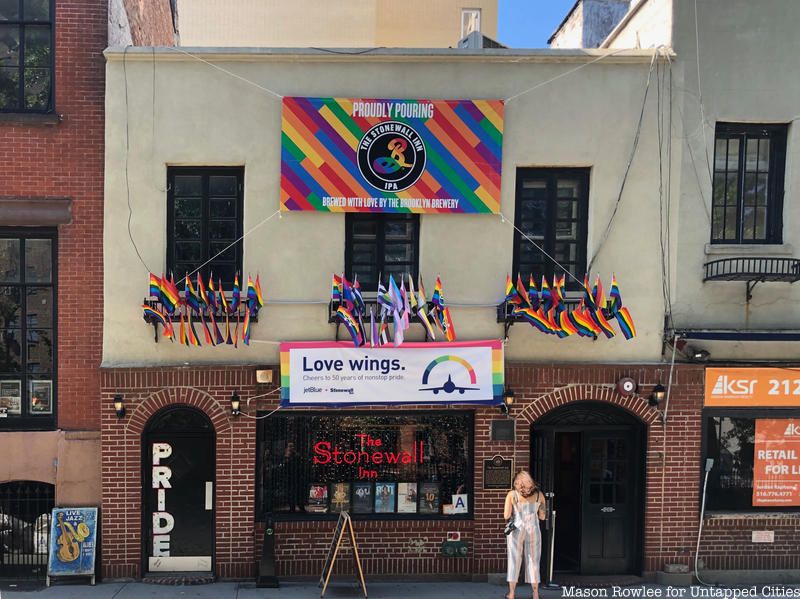
On the campaign trail in 2019, Joe Biden, now 46th President of the United States, made a stop at New York City’s Stonewall Inn in Greenwich Village. Just ahead of the 50th anniversary of the Stonewall riots, Biden showed his support for the LGBTQ+ community by visiting the cultural landmark with his wife Jill. Even though Biden doesn’t drink alcohol, he greeted supporters at the bar and bought a round of drinks.

Born and raised in Queens, Donald Trump and his family have had an influence on many locations in New York City, from buildings Trump has owned (including Trump Tower). Here, we will focus on his childhood home in Jamaica Estates, Queens. Above was his first house at 85-15 Warham Place where he lived until four when the family made a significant upgrade to a Neoclassical Revival house just nearby at 85-14 Midland Parkway.
Next, check out a guide to the Real-Life Locations from the Broadway musical, Hamilton!
Subscribe to our newsletter